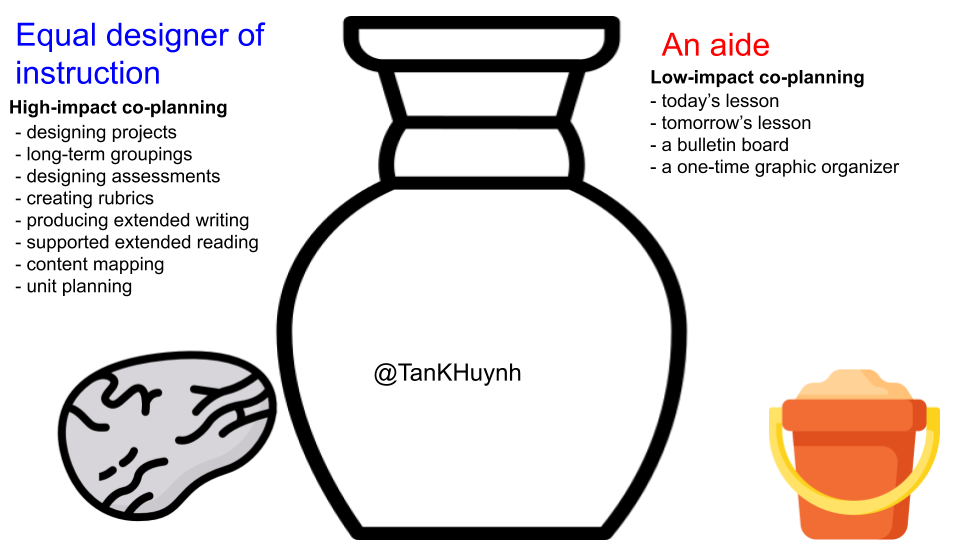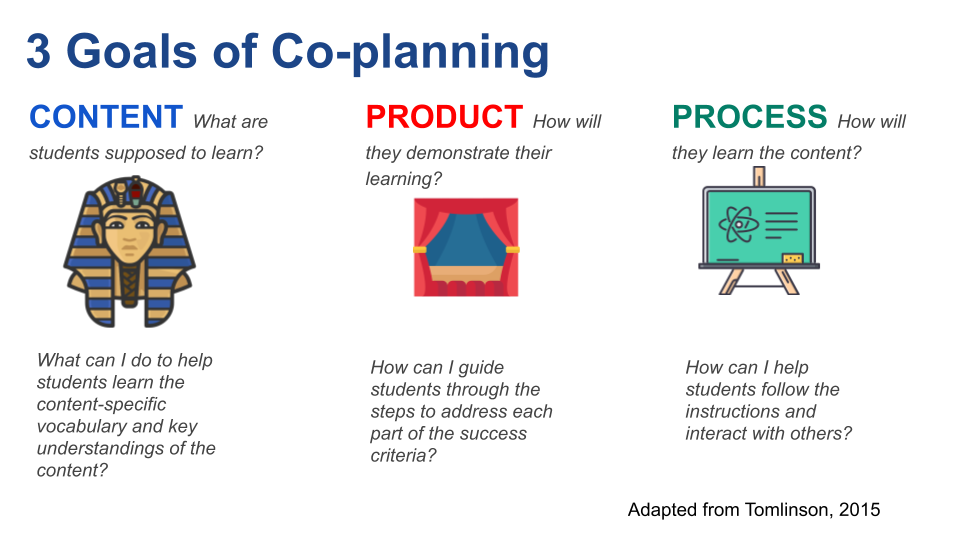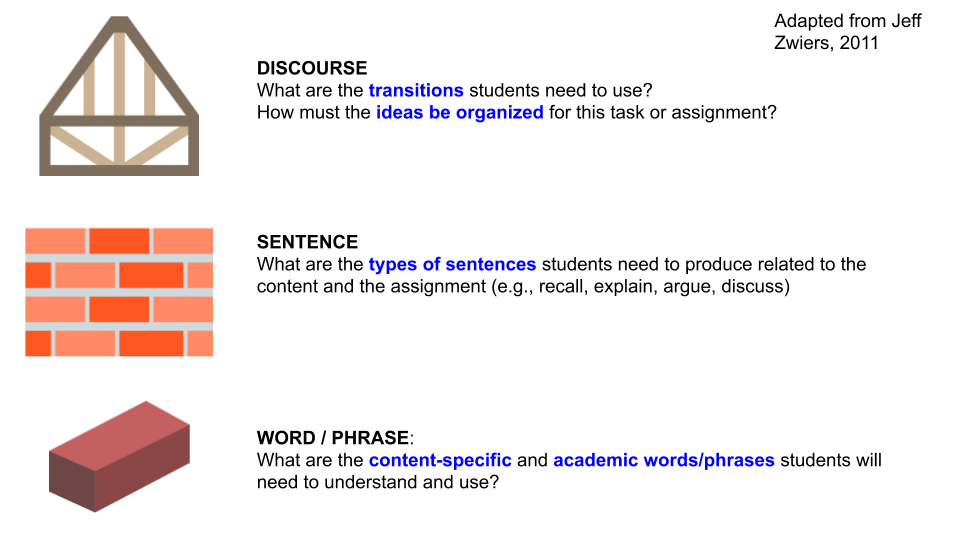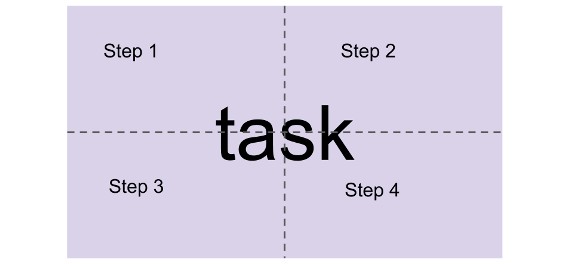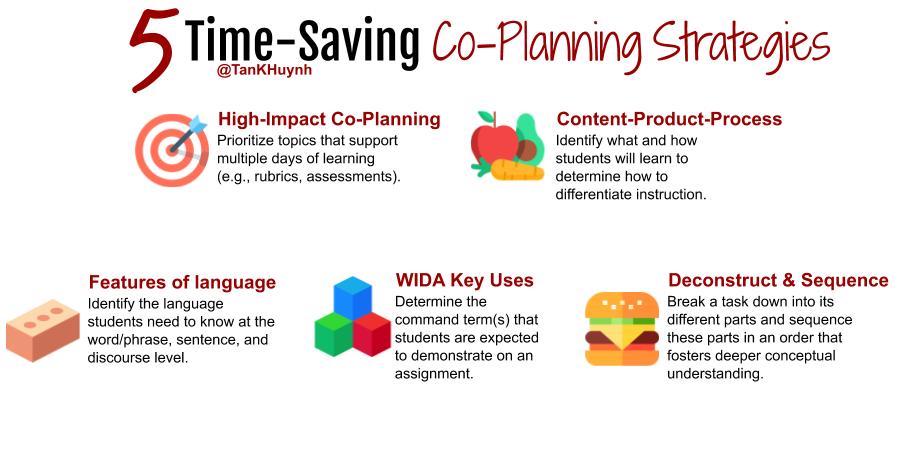5 Ways to Co-Plan When There’s a Time Crunch
A MiddleWeb Blog

If you are new to co-planning or have a limited amount of time for co-planning, this post shares my personal top five most used strategies when co-planning. I hope you find them helpful!
High-Impact Co-planning (HICP)
Let’s pretend that I’m giving you a task: to put four large stones, a handful of pebbles, and a pile of sand into a gallon mason jar. In what order will you place these items? Most people would see fairly quickly that they need to space the four large stones first as they take up the most space.
It is the same concept for HICP. Co-planning a bulletin board – like the pile of sand – takes up less space and produces significantly fewer results than planning an end-of-unit summative assessment – the big stones. Not everything is worth co-planning.
The topics that support multiple days of learning need to anchor our co-planning. These include:
Unit planning
Whole-class novels
End-of-unit projects
Standards mapping
Summative assessments
Essential question sequencing
Rubrics and success criteria
Extended writing tasks (lab reports, essays)
A single session of co-planning on any of these topics will carry you and your colleague through a full unit. Though you will have to meet briefly to readjust on a daily or weekly basis, HICP will prevent you from starting from scratch each time you co-plan. These are the anchoring items of your co-planning, and they are less stress-inducing than planning the day-to-day details.
Content-Product-Process
Content-Product-Process is my go-to strategy when working with colleagues. This framework comes from Carol Ann Tomlinson and is used to differentiate work (2015). I use it to determine:
Content: what topics and content standards do students have to learn.
Product: what students have to produce to demonstrate mastery (e.g., a report, poster, animated video, essay, infographic).
Process: how students will learn the content (e.g., lectures, videos, readings, simulations, group work, individual study).
Once we identify these items, we can plan who will teach what, who will work with whom, what resources we need to provide, and what scaffolds we can build in. This process saves a significant amount of time because the questions are highly targeted.
Features of Academic Language: Word, Sentence, Discourse
Teachers often ask how can they be teachers of language when they are a science, PE, design, math, art, music, or drama teacher?
And the answer is: They need to be teachers of the language used in their content area. To be a teacher of language in this way means focusing on the three different features of academic language:
Word/phrase level: the content-specific, Tier 3 words needed to understand the content (e.g., supply-demand, photosynthesize, D minor).
Sentence level: the sentence structures used to communicate about content-related topics (e.g., According to the data, when the shape of the plane changes, the distance it travels increases).
Discourse level: the order of ideas from sentence to sentence or paragraph to paragraph (e.g., a design brief might be organized by the problem, research, plan, specifications, prototypes, final product, and evaluation).
This framework of language comes from the WIDA Consortium, and teachers can use it when they are confused about how to support language learners. Sustained co-planning that focuses on these text structures will have an even bigger impact. By using this method, even a drama teacher can be a teacher of language – the language of drama.
WIDA Key Uses: Command Terms
WIDA conducted a research study on the most common command terms used from kindergarten through college. They organized these command terms into four categories, which they called Key Uses (Gottlieb, 2013):
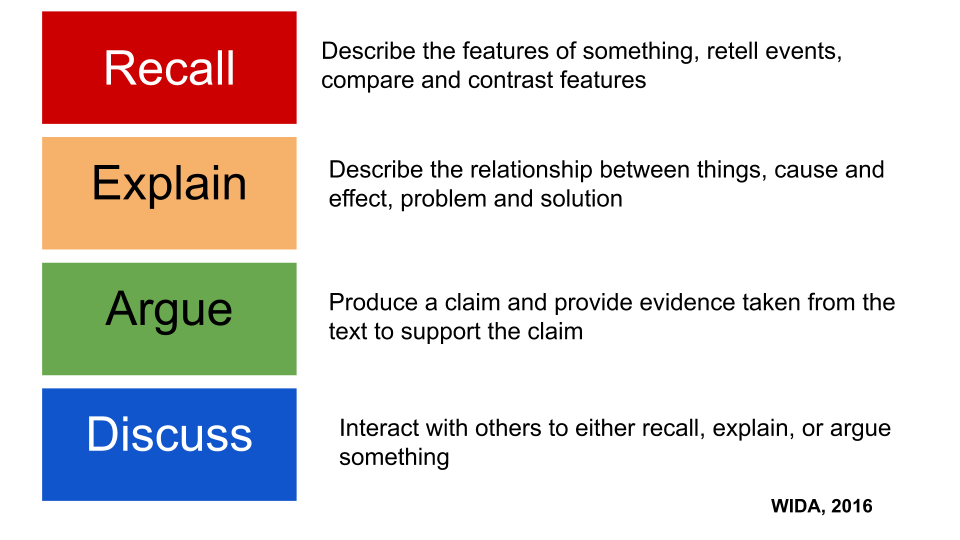
Recall: In the beginning, then, after that, second, finally
Explain: As a result, therefore, due to, a consequence, this occurred because
Argue: The most important, the least effective, the most significant factor
Discuss: As Abdul said, according to Ichigo, in contrast to Roberto’s suggestion
Co-planning with WIDA’s Key Uses is another way content teachers can become teachers of language – specifically, the terminology and prose of their content area. Being a teacher of language means making visible the language used by experts.
Deconstruct and Sequence
As you plan with colleagues, work to deconstruct the task into its essential elements. For example, the parts of a research paper can consist of:
The problem
The cause
The effects
The possible solutions
Once we’ve deconstructed these parts, then sequence the order in which students must present the information. Each part then becomes a mini-task that students have to engage with. The assignment becomes more manageable. When we co-plan this way, students are less likely to say, “I do not know where to start.”
This strategy can also support backward design. Once we can identify all the different parts of the assignment, we can more easily sequence them to move students cognitively towards a specific end goal in mind. The order of the task is just as important as the content of the assessment.
Co-planning must be in the service of our colleagues, not just our students. We joke in our field that sometimes our colleagues run away when they see us walking towards them to co-plan. Introducing them to ideas like these can help stop the running!
When co-planning is an efficient use of time and in the service of our colleagues’ responsibilities, our colleagues will see co-planning with us less like a job they have to do and more of a step they want to include in their teaching.
I hope these strategies serve you and help make your colleagues eager to co-plan with you. They have certainly helped me structure and maximize my limited co-planning time.
Gottlieb, M. (2013). Essential Actions: A Handbook for Implementing WIDA’s Framework for English Language Development Standards. Madison: Board of Regents of the U of Wisconsin System.
Tomlinson, C. A. (2005). The Differentiated Classroom: Responding to the Needs of All Learners. New Jersey: Pearson.

